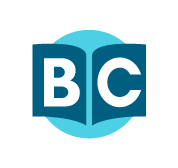There are a range of different formats - each with different levels of accessibility depending on how the file was made. Readers might prefer familiar formats (like Word or PDF) or formats that offer more portability across devices (like EPUB). For readers with disabilities the flexibility of the format is very important so EPUB is attractive but no single format guarantees accessibility. All ebooks in the Accessible Reading BC collection are in EPUB format.
Table of Contents
EPUB
EPUB is a mainstream format and also the most accessible format when made properly. EPUB 3 embraces all accessibility features present in the DAISY standard and much more. It is a HTML-based, platform-independent ebook format, which is highly adaptable.
A reflowable EPUB with a table of contents (TOC), headings, and image descriptions can be read on a range of devices with text-to-speech and other visual modifications (such as enlarging text size, changing font type, contrast, etc.) if required by the reader.
EPUB is available for many titles, usually when contributed by, or purchased from, a publisher. These files will vary in regards to their accessibility, depending on how the publisher makes them.
NNELS produces fully accessible EPUB 3. These books contain structured navigation and image descriptions (read more about the accessibility of our files). The EPUB files will be readable with any software that supports EPUB, including newer DAISY players and Kurzweil. The only notable device lacking integrated support for the EPUB format is the Amazon Kindle, although there has recently been speculation that the Kindle will soon support this format.
DOC
Microsoft Word (DOC/DOCX format) is a popular format with users, as it is familiar, it has 500% magnification with reflow, can change foreground and background colours easily and is amenable to text to speech. DOC files can be opened in a variety of programs, not just Microsoft Word.
RTF
The Rich Text Format (RTF) is a text file format that can be read with a variety of programs. Most word processors are able to read and write some versions of RTF.
PDF is typically requested when a reader would like the digital copy to look exactly like the print book.
PDF is still a common file format for publishing, and most of the PDF files in NNELS come directly from publishers so the level of accessibility for PDFs will vary. Publisher-provided PDF files may not always work well with assistive technology due to fewer accessibility options with text reflow and navigation often being absent.
The PDF files in the repository should be text-readable (allowing text-to-speech reading), but it is common for us to change PDF files to a different format at the request of a reader.

